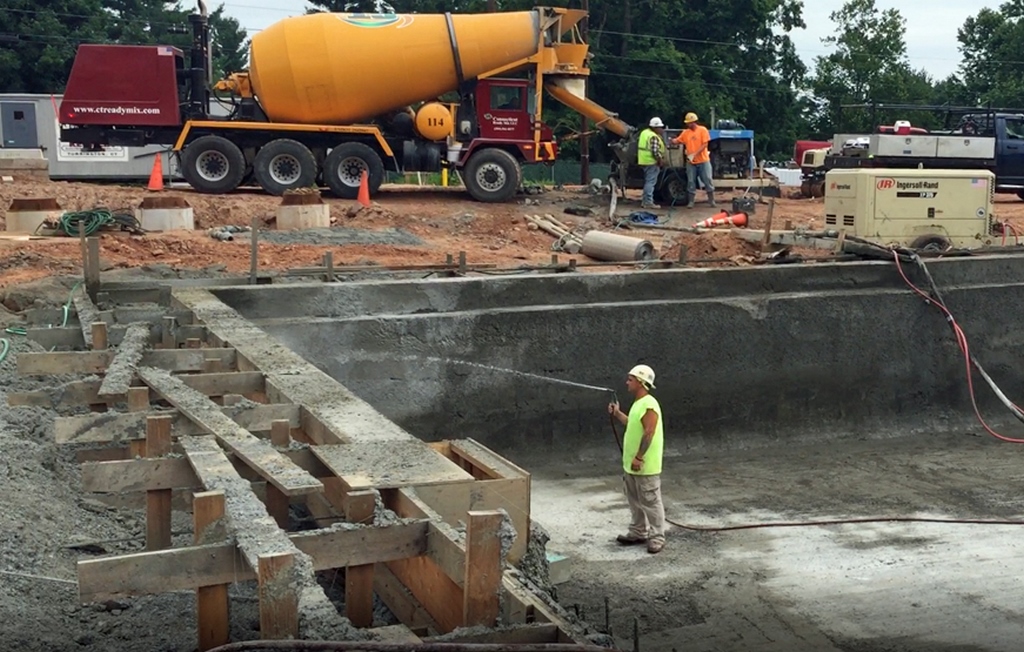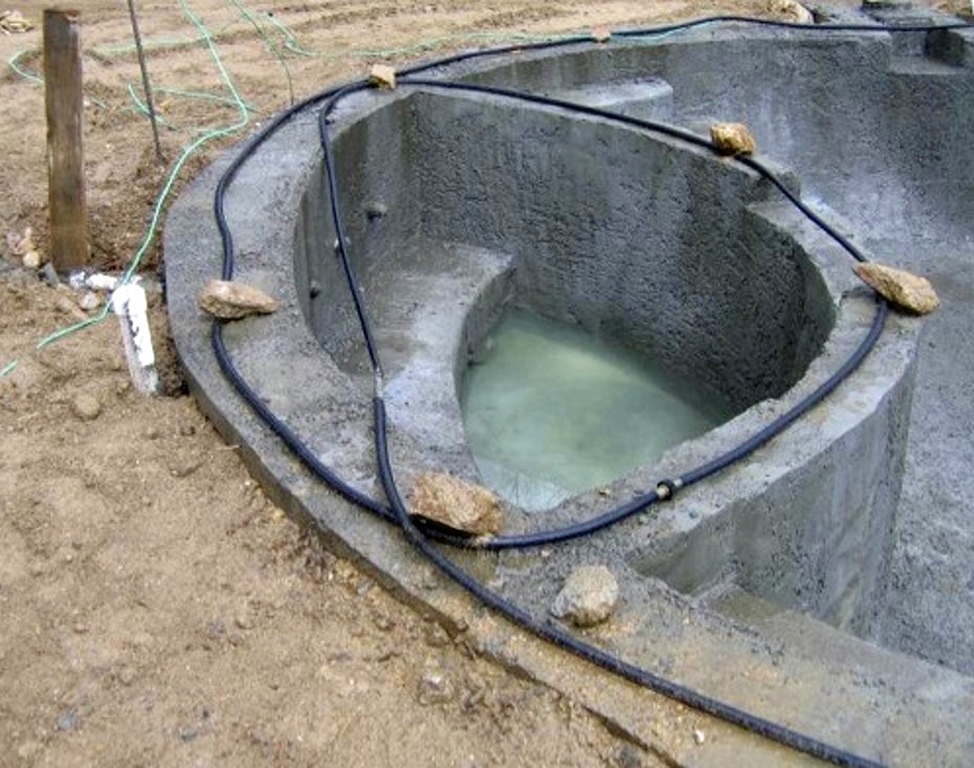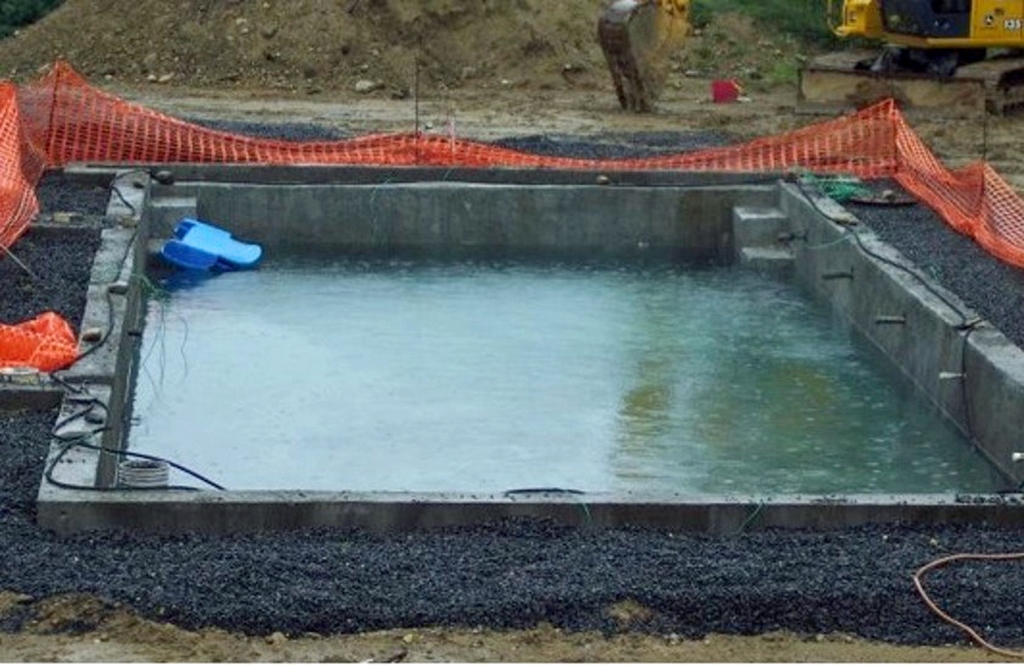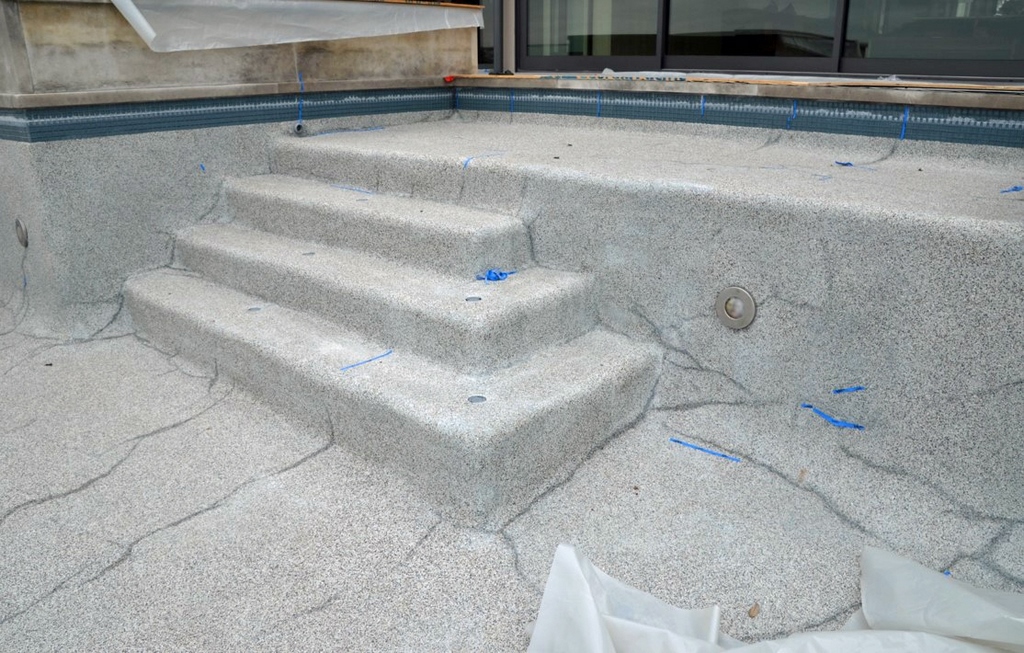Hot-Weather Shotcrete
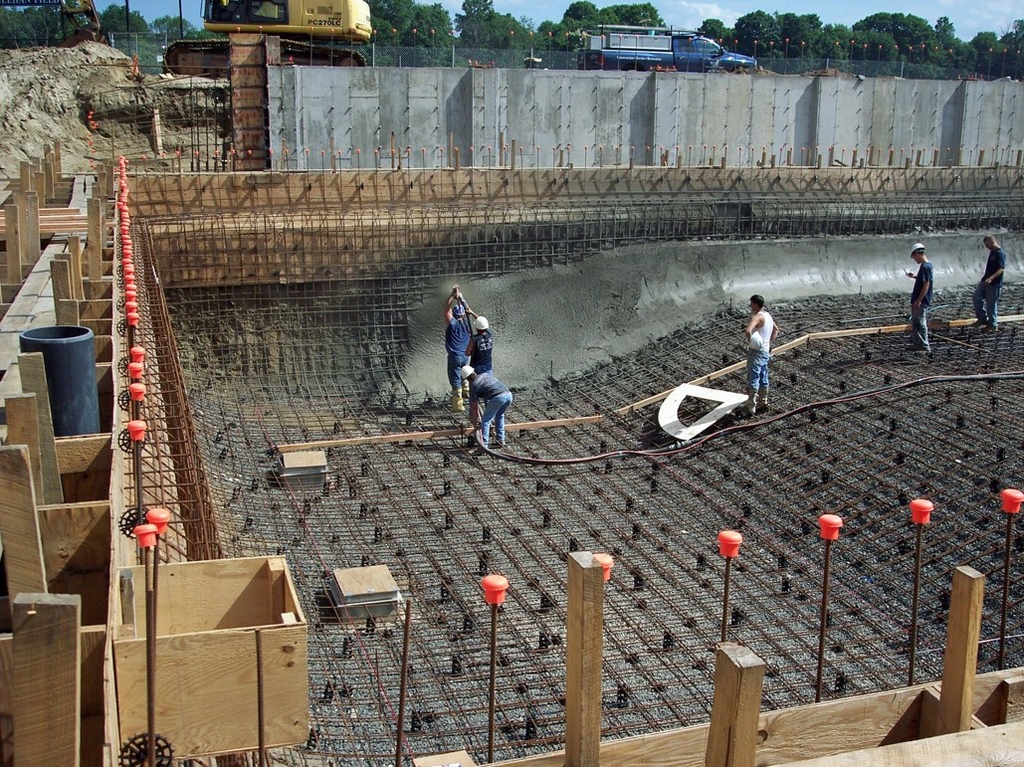
 Placing shotcrete in hot weather can be a risky proposition if you don’t follow basic guidelines. Success under these conditions, reports William Drakeley, calls for controlling concrete temperature and mix design while also managing details of the installation and curing processes.
Placing shotcrete in hot weather can be a risky proposition if you don’t follow basic guidelines. Success under these conditions, reports William Drakeley, calls for controlling concrete temperature and mix design while also managing details of the installation and curing processes.
The summer is always busy, but that may be a huge understatement this year. The country is coming back to life with consumers very aware of their personal space and wanting to do more with it – which, often times, means adding water.
As a result, heightened demand for our industry’s products will likely lead to all sorts of logistical and supply issues. The availability of concrete may well be one of those critical issues. Ready-mix people I’ve talked to are saying that during this forced downtime, many homeowner do-it-yourselfers are taking on their own concrete work. Suppliers caution that when the contractors come back fully online during the summer, there could be delays in product supply and even shortages of delivery trucks.
To varying degrees that’s often true in hot weather, when elevated temps drive demand. With the current extraordinary circumstances especially, the first step in hot-weather concrete work, whether you’re doing wet-mix or dry-mix, you need to communicate with your suppliers setting up orders well in advance. That’s the only way you’ll know what to expect in terms of availability and delivery, so you can schedule accordingly and in turn let the client know what to expect.
Beyond that basic caveat, there are specific measures and conditions required whenever you’re applying concrete in hot weather.
ENVIRONMENTAL CONDITIONS
Placing shotcrete in hot weather requires temperature control, environmental control and jobsite control.
| Note: This article is based on an online presentation given by the author on May 13th as part of Watershape University’s Wolfpack Webinar Wednesdays. |
I’m currently serving as chairman of American Concrete Institute’s 506-OH pool shotcrete committee, which is currently writing guidelines for the shotcrete sprayed application process, as it pertains both wet mix or dry. In the hot weather shotcrete section we refer to the existing standard contained in ACI 305, which defines what is and isn’t acceptable temperatures.
According to that document, you should always try to keep concrete as cool as possible and you should never try to apply shotcrete when ambient temperatures over 95 degrees, unless precautions are taken that are approved by an engineer. You can cool the concrete by using cold water to mix it, misting systems, wetting blankets and shade, all things that slow down evaporation.
| Wetting freshly applied shotcrete is crucial to cool it down in hot weather and slow down the hydration process. |
It helps to consider what’s happening in the concrete matrix to better understand why these measures are necessary. When you add water to Portland cement hydration occurs which leads to strengthening as materials bind together. That process leads to a volumetric change in the concrete, due to a complex set of exothermic chemical reactions that generates heat.
When you’re already working in warm conditions, you can easily wind up generating too much heat if you’re not taking measures to cool down the ambient temperatures and the concrete itself. You also need to keep the temperature of the reinforcing steel down to 90s degrees. If you don’t, the steel can actually overheat the water inside the concrete mixture. The water turns to gas, leaving the mix and hindering the hydration of the Portland cement particles, which is ultimately what gives the concrete its strength.
Yes, it is possible to successfully place shotcrete in temperatures over 105 or even higher – consider Arizona and Nevada. But, you must take recommended precautions. Do everything you can to avoid the heat of the day by working in the morning if possible, erect a shade structure to keep the concrete out of direct sunlight, etc.
TIMELY APPLICATION
Shotcrete is very time-sensitive and that’s particularly true in hot weather. Whenever you see a cement truck on site, spinning and mixing the concrete you’re watching a clock ticking. Under normal conditions with no added measures, you have about 90 minutes from the time the truck is filled until you get it into place. All things being equal, that timeframe shortens in hot weather.
When you add water to the mixer to cool and slow down the hydration process and expand how long you have to shoot, trim and trowel it into place, you’re changing the water-to-cement ratio and the concrete won’t be as strong as it should be.
Maintaining the right water-to-cement ratio is another key concept, which is always the case, but especially so in elevated temperatures. Water-to-cement ratio is driven by the application. In a situation where you want high density concrete that will resist environmental issues such as corrosion from saltwater exposure, you go with a .40 ratio as defined by ACI. That doesn’t have as much water as a more typical .50 ratio.
| We use a number of techniques to keep things cool during the curing process including soaker hoses, misters, shade structures, cooling blankets and burlap. |
So, how do we manage concrete mix design so it slows down the mixing time in warm weather? In addition to physical measures to keep things cool, you can adjust the mix design and include admixtures that can stretch the timeframe to more than three hours without compromising strength. We’ve used a hydration-controlling additive called Delvo that has been very effective, enabling us to extend it to four or even five hours.
Also known as set stabilizers, these admixtures chemically suspend the hydration process. They temporarily coat the Portland cement particle and prevent water from coming in contact with it, which retards the hydration process. Not only does that help in hot weather, it’s also extremely helpful in situations where delivery takes a long time for whatever reason. You slow down the process so if it takes more than two hours for the truck to reach the jobsite, and as a result you’re still well within the timeframe for workability and concrete strength.
Different chemicals will impact hydration and set times at different rates, so you need to have an understanding of the performance characteristics of the products you’re adding to the mix, whether they are set retarders, troweling aids or plasticizers. As you alter the chemistry, you need to be aware of what it’s doing to the workability and set times.
READY TO WORK
Just as scheduling becomes a critical issue in hot weather the same is true of mix design. Ready-mix engineers know their own products and can easily adjust the mix design to suit your needs and situation; but you must communicate!
I’ll lay it all out for them. Here’s the thickness of the wall, the steel schedule, how far the job site is from the batch plant, how far we have to pump it, the anticipated temperature range we’ll be working in and the desired compressive values and durability factors. I’m always looking for the best mix design for that situation so that we get the structure desired and specified. If you don’t consider all factors, you may have concrete with insufficient compressive strength and density, and you may have excessive shrinkage cracks and other problems.
| Concrete should cure for 28 days and remain constantly wetted for the first seven to ten of them. |
While the concrete mix is all about preparation and forethought, the same is true when it comes to orchestrating the physical work onsite. When we’re working in hot weather, it ‘s a very carefully choreographed process. We have guys wetting down the steel, finishing the concrete immediately using trowels and radius boards, and then wetting down the concrete to slow down the hydration and maintain recommended temperatures.
Hot weather concrete placement takes planning and experienced crews. This is no place to train a rookie, because you’ve got to move fast and work efficiently to stay ahead of the hydration process and maintain moderate temps. Everything is more time-sensitive and unforgiving, making for a more challenging process on site where you must keep moving or risk a failed structure.
Time and time again, we’ve seen situations where the contractor was careless; they weren’t managing the temperature with misters or by wetting the surface; they didn’t control the chemistry; they didn’t cool down the steel and substrate; and, they didn’t get the work done in the right time frame. When you see those missteps, the pool will crack, often before the plaster is installed and there will be a range of cosmetic and, very likely, structural issues for the life of the pool.
IT’S CURED
Finally, curing is another crucial part of the process that can be dramatically impacted by high temperatures. Curing is defined as moisture slowly leaving the mix to maximize strength. The ACI recommends 28 days curing time. For shotcrete our committee recommends keeping the surface constantly wetted for seven to 10 days minimum.
During the curing process, again you’re trying to slow down hydration so the water stays in the matrix and has time to interact with all of the available Portland cement particles. In hot weather, you need to be aware that the curing process will be accelerated and if it goes unchecked, you’re going to reduce the strength of the concrete.
As is true during concrete placement, during curing you encounter heat from two sources — the chemical reaction and the environment. You must rigorously follow curing guidelines to keep the moisture in the concrete mix. We’ve found through taking core samples for quality control, if you keep the concrete wetted for seven days, you’ll be gaining compressive strength very rapidly. After seven days, it’s not unusual to find concrete at 4,000 psi and higher.
| This is what can happen when you don’t follow proper cooling and wetting guidelines. |
If, on the other hand, you don’t follow the curing protocol, the strength will be far, far less. It absolutely destroys the compressive value.
Moisture can be maintained by sprinkling, flooding, or fog spraying, or by covering with continuously moistened canvas, cloth mats, straw, sand, or other approved material. Wood forms left in place during the curing period should also be kept wet. Formed surfaces should be thoroughly wetted immediately after forms are removed.
If you’re in an area impacted by drought, we recommend using damp burlap to keep the surface wet. Otherwise a sprinkler hose will work just fine. Either way, you have to keep it wet and keep it cool or the concrete will hydrate too quickly.
It’s true that even if you do everything right, you will still have some shrinkage cracks, because all concrete cracks and that’s especially true for structures installed during hot weather. But if you follow the basic guidelines discussed above, you’ll wind up with a pool shell with high compressive values and at least minimal cracking.
The bottom line is when you’re working high temperatures you must follow expert guidelines. Slowing everything down when it’s hot is not always the easiest thing to do, but in the world of concrete placement, it’s absolutely necessary.
William Drakeley is principal and owner of Drakeley Industries and Drakeley Pool Company in Bethlehem, Conn. He holds the distinction of being the first and only pool builder to sit as a voting member of the American Shotcrete Committee 506 – Shotcrete, and he serves as secretary of the ACI C660 Nozzelman Certification Task Group. He is a co-founder of, and instructor for, Watershape University, teaching courses on shotcrete application at numerous trade shows. Drakeley is a valued contributor to WaterShapes, Shotcrete Magazine and other industry publications.










